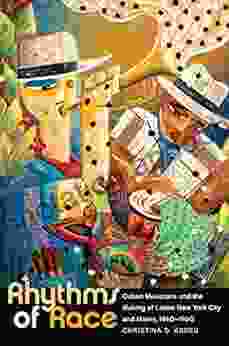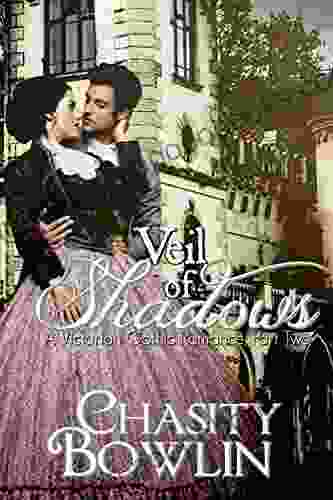Cuban Musicians and the Making of Latino New York City and Miami, 1940-1960: A Thrilling Excursion into Musical History

Prepare to embark on an enthralling journey through the vibrant streets of New York City and Miami, where the infectious rhythms of Cuban music once reverberated, leaving an indelible mark on the cultural landscape. In her captivating book, "Cuban Musicians and the Making of Latino New York City and Miami, 1940-1960," author Anya Bernstein paints a vivid and captivating portrait of how Cuban musicians ignited a musical revolution, transforming the soul of these two iconic cities.
With meticulous research and an infectious passion for the subject matter, Bernstein transports readers back to a time when the enchanting sounds of mambo, salsa, and Afro-Cuban rhythms filled the airwaves, dance halls, and nightclubs. Through her exploration of the personal stories, struggles, and triumphs of these talented musicians, the book unveils the pivotal role they played in shaping the rich cultural tapestry of New York City and Miami.
4.6 out of 5
| Language | : | English |
| File size | : | 4825 KB |
| Text-to-Speech | : | Enabled |
| Screen Reader | : | Supported |
| Enhanced typesetting | : | Enabled |
| Word Wise | : | Enabled |
| Print length | : | 313 pages |
Chapter 1: The Rhythmic Pioneers
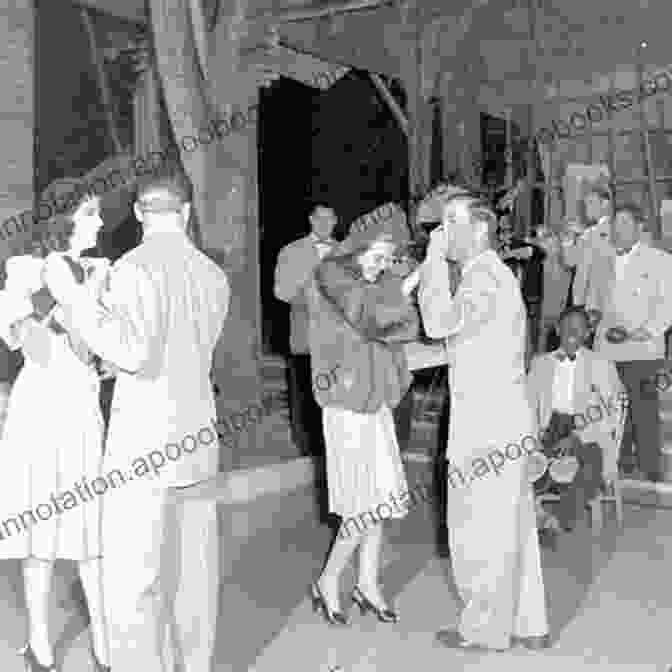
Bernstein's narrative begins with the arrival of the first wave of Cuban musicians in New York City in the late 1930s, seeking refuge from political turmoil and economic hardships on their home island. These pioneering musicians brought with them a vibrant mix of musical traditions, from the infectious rhythms of son to the sultry melodies of bolero.
As they settled in Harlem and Spanish Harlem, they found a receptive audience eager to escape the grim realities of the Great Depression. They began performing in small clubs and dance halls, captivating audiences with their energetic performances and infectious rhythms.
Chapter 2: The Mambo Explosion
The 1950s witnessed an explosion of the mambo craze, which took New York City by storm and quickly spread to other cities across the nation. Led by legendary bandleaders such as Tito Puente, Machito, and Tito Rodriguez, mambo became the soundtrack of the era, its irresistible rhythms and vibrant dance moves captivating audiences of all backgrounds.
Bernstein delves into the factors that propelled the mambo's meteoric rise, from the post-war economic boom to the growing popularity of Latin music on the radio and television. She highlights the innovative arrangements and virtuosic performances of Cuban musicians, who pushed the boundaries of the genre and created a new and exciting sound that resonated with audiences around the world.
Chapter 3: The Birth of Salsa
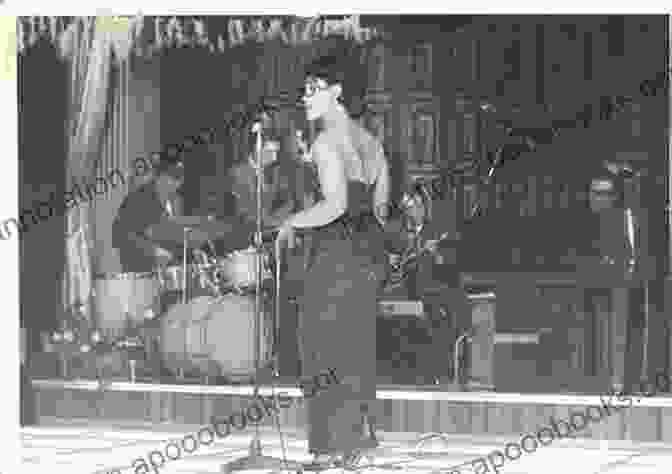
As the 1960s dawned, a new musical force emerged from the vibrant melting pot of New York City's Latino community: salsa. Bernstein traces the evolution of salsa, from its roots in Cuban son and other Afro-Cuban rhythms to the innovative fusion of styles that gave birth to this dynamic and infectious genre.
She showcases the key figures who shaped the sound of salsa, from Willie Colón and Héctor Lavoe to Celia Cruz and Rubén Blades, and explores the social and political context that influenced its development. Salsa became a powerful expression of Latino identity and a symbol of cultural resistance, resonating deeply with communities across the United States and beyond.
Chapter 4: Miami's Rising Star
While New York City remained the epicenter of Cuban music in the United States, Bernstein also shines a light on the vibrant and thriving music scene that developed in Miami, Florida. In the 1960s, Miami became a refuge for Cuban exiles fleeing the Castro regime, and the city quickly established itself as a major hub for Cuban music.
Bernstein introduces readers to the influential musicians who made Miami their home, such as Willy Chirino, Gloria Estefan, and Arturo Sandoval, and explores how they continued to innovate and expand the reach of Cuban music. She highlights the unique cultural dynamics of Miami's Cuban community and its impact on the development of a distinct sound that blended traditional Cuban rhythms with American pop influences.
A Musical Legacy that Endures
Bernstein brings her captivating narrative to a close by reflecting on the enduring legacy of Cuban musicians in New York City and Miami. She emphasizes the profound impact they had on shaping the musical landscape of these cities, not only through their infectious rhythms but also through their cultural contributions and social activism.
"Cuban Musicians and the Making of Latino New York City and Miami, 1940-1960" is a meticulously researched and beautifully written book that shines a much-needed light on a fascinating chapter in musical history. Anya Bernstein's passion for the subject matter is evident on every page, and her ability to weave together personal stories, historical context, and musical analysis makes for a truly engaging and illuminating read.
Whether you are a music enthusiast, a history buff, or simply someone curious about the rich tapestry of American culture, this book is a must-read. It offers a vibrant and immersive journey into the world of Cuban musicians, revealing their struggles, triumphs, and the undeniable mark they left on the cities they called home.
Free Download your copy today and immerse yourself in the captivating rhythms of Cuban music!
4.6 out of 5
| Language | : | English |
| File size | : | 4825 KB |
| Text-to-Speech | : | Enabled |
| Screen Reader | : | Supported |
| Enhanced typesetting | : | Enabled |
| Word Wise | : | Enabled |
| Print length | : | 313 pages |
Do you want to contribute by writing guest posts on this blog?
Please contact us and send us a resume of previous articles that you have written.
 Book
Book Novel
Novel Page
Page Chapter
Chapter Text
Text Story
Story Genre
Genre Reader
Reader Library
Library Paperback
Paperback E-book
E-book Magazine
Magazine Newspaper
Newspaper Paragraph
Paragraph Sentence
Sentence Bookmark
Bookmark Shelf
Shelf Glossary
Glossary Bibliography
Bibliography Foreword
Foreword Preface
Preface Synopsis
Synopsis Annotation
Annotation Footnote
Footnote Manuscript
Manuscript Scroll
Scroll Codex
Codex Tome
Tome Bestseller
Bestseller Classics
Classics Library card
Library card Narrative
Narrative Biography
Biography Autobiography
Autobiography Memoir
Memoir Reference
Reference Encyclopedia
Encyclopedia Diana L Ahmad
Diana L Ahmad William Wharton
William Wharton Matthew Lippman
Matthew Lippman Luigi Marco Bassani
Luigi Marco Bassani Cheryl D Clay
Cheryl D Clay Douglas Dales
Douglas Dales Vishal Gupta
Vishal Gupta Ciro Plateroti
Ciro Plateroti Cinderella Celeste
Cinderella Celeste Georges Exertier
Georges Exertier Chris Cleave
Chris Cleave Susan Tarr
Susan Tarr Sharon Olds
Sharon Olds Cheryl Deines
Cheryl Deines Clara B Ray
Clara B Ray Chor Pee Lim
Chor Pee Lim George A Peters
George A Peters Mary Matthews
Mary Matthews Jana Echevarria
Jana Echevarria Lilian Jackson Braun
Lilian Jackson Braun
Light bulbAdvertise smarter! Our strategic ad space ensures maximum exposure. Reserve your spot today!

 Virginia WoolfClimate Change and the White World: Exploring Impacts and Inspiring Solutions
Virginia WoolfClimate Change and the White World: Exploring Impacts and Inspiring Solutions Aldous HuxleyFollow ·17.4k
Aldous HuxleyFollow ·17.4k Gage HayesFollow ·18.8k
Gage HayesFollow ·18.8k Herbert CoxFollow ·8.3k
Herbert CoxFollow ·8.3k T.S. EliotFollow ·12.7k
T.S. EliotFollow ·12.7k Owen SimmonsFollow ·8.3k
Owen SimmonsFollow ·8.3k Ike BellFollow ·17.1k
Ike BellFollow ·17.1k Forrest ReedFollow ·4.5k
Forrest ReedFollow ·4.5k Felix CarterFollow ·11.8k
Felix CarterFollow ·11.8k

 Kevin Turner
Kevin TurnerDive into the Enchanting World of "Crazy Like Fox": A...
Prepare yourself for a literary adventure...

 Ralph Waldo Emerson
Ralph Waldo EmersonUnlock the Elegance of Daffodil Lace: An Immersive Guide...
: A Tapestry of Delicate...
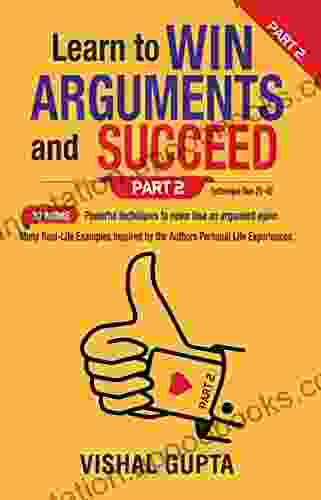
 Gerald Parker
Gerald ParkerNever Lose An Argument Again: 20 Powerful Techniques From...
Are you tired of losing...

 Xavier Bell
Xavier BellSeven Animal Insertions Filet Crochet Pattern: Embark on...
Welcome to the captivating...
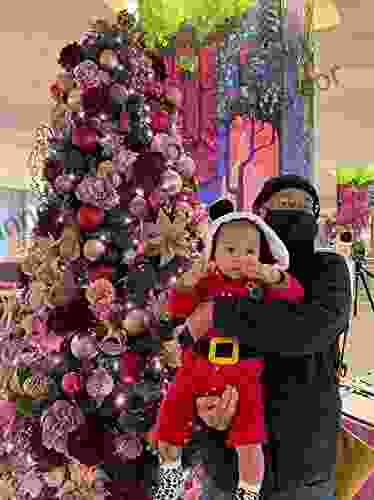
 Eugene Powell
Eugene PowellMagomago in TDS Magomago 12: An Unforgettable Adventure...
Step into the Enchanting World of...

 Marvin Hayes
Marvin HayesSoft Felting Needle Holder Excellence In Reborn Artistry
Unveiling the Secrets of the...
4.6 out of 5
| Language | : | English |
| File size | : | 4825 KB |
| Text-to-Speech | : | Enabled |
| Screen Reader | : | Supported |
| Enhanced typesetting | : | Enabled |
| Word Wise | : | Enabled |
| Print length | : | 313 pages |


